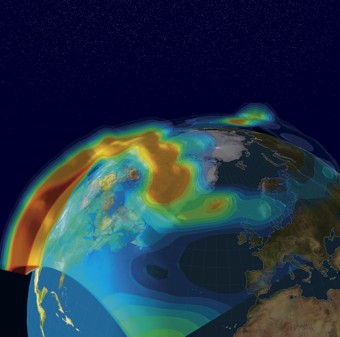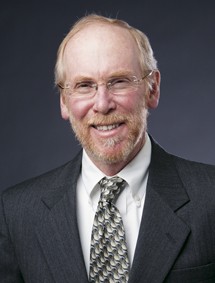
Extreme space weather
Paul Kintner has been a professor of Electrical and Computer Engineering at Cornell University since 1991. He received his Ph.D. in physics from the University of Minnesota in 1974, then was a postdoctoral research associate at the University of Iowa in Prof. Van Allen's group from 1974-1976. He came to Cornell University in 1976 as a research associate and was promoted to assistant professor in 1981 and associate professor in 1985. He was associate director from1997-2001. As of September 1, 2010, he is a Jefferson Fellow with the U.S. Department of State.
Prof. Kintner's scientific interests include the Geospace environment and the development of instrumentation for both in situ sensing on rockets and satellites and ground-based remote sensing. During the past 10 years, he has initiated a program to develop Global Positioning System receivers for scientific applications, including ground-based GPS receivers to monitor ionospheric scintillations and ionospheric drifts and space flight GPS receivers for time synchronization and precision positioning on multiple payload sounding rockets. He has been the principal investigator for eight sounding rockets, three of which were launched from Norway, and a co-investigator or contributor to 30 more space flight experiments. He is the author or co-author of more than 180 scientific publications on space physics and space weather.
Dr. Kintner was chair of the NASA Living With a Star/Geospace Mission Definition Team from 2001-2002. He is a fellow of the American Physical Society, a member of the American Geophysical Union, a senior member of the Institute of Electrical and Electronic Engineers, a senior member of the American Institute of Aeronautics and Astronautics, and a member of the Institute of Navigation. Dr. Kintner developed and teaches courses such as "GPS: Theory and Design" and "Advanced GPS Receiver Design", resulting in several teaching awards. Recently, he served on the National Research Council Committee on the Societal and Economic Impacts of Severe Space Weather Events, leading to this presentation.
Extreme space weather is this year's topic for the Birkeland Lecture. We are already familiar with powerful weather phenomena such as snow- and thunderstorms. Other types of storms can occur in space. These types of storms are known as «sunstorms», and like the earthstorms they can cause problems for us humans. In his lecture, Prof. Dr. Paul M. Kintner, Jr, will explain how these sunstorms emerge and what effect they have.
”Extreme space weather” har årets Birkelandforeleser, Prof. Dr. Paul M. Kintner, satt som tittel på sitt foredrag.
”Extreme space weather”
